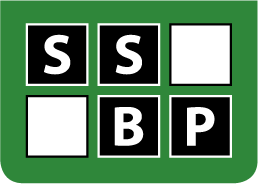Presentation 15 – Dr Nicole Tartaglia
SSBP Virtual Symposium 2023
The eXtraordinarY Babies Study: Utilization of Early Intervention Therapies in 289 Children with a Prenatal Diagnosis of Sex Chromosome Aneuploidy (XXY, XYY, Trisomy X) and Relationship of Speech Therapy to Speech-Language Outcomes at 36 months of age
Presenting Author : Dr Nicole Tartaglia
Abstract
The eXtraordinarY Babies Study: Utilization of Early Intervention Therapies in 289 Children with a Prenatal Diagnosis of Sex Chromosome Aneuploidy (XXY, XYY, Trisomy X) and Relationship of Speech Therapy to Speech-Language Outcomes at 36 months of age
Tartaglia N.R.1,2, Kirk J.1, Howell S.1,2
1 University of Colorado School of Medicine, USA
2 Children’s Hospital Colorado, USA
Background: Sex chromosome trisomy (SCT) occurs in 1:500 newborns and is associated with increased risk of developmental delays. The eXtraordinarY Babies Study is a natural history study of prenatally-identified children with SCT aiming to characterize health and neurodevelopment from infancy and identify predictors of outcomes. This project aimed to: (1) Describe the utilization of early intervention (EI) therapies in young children with XXY, XYY, and Trisomy X, and (2) compare language outcomes at 36-months of age between 3 groups: no previous speech therapy (ST), proactive ST due to increased risk, and ST initiated in response to identified speech delay.
Methods: Infants with prenatally identified SCT (n=289; 189 XXY, 34 XYY, 66 XXX) enrolled in the study prior to 12 months. Demographic information, medical, developmental, and EI history were collected at 12, 24, and 36 month visits. Reason for initiation of speech therapy was coded as proactive or reactive. Expressive and Receptive communication scaled scores (SS) from the Bayley-3 were analysed by ANOVA in relationship to independent variables of ST subgroups. The Bayley-3 subset was limited due to COVID-19 visit restrictions.
Results: 58% of participants received at least 1 type of EI therapy, mean age of initiation 9.9 months (SD 6.22, 0-34m). There were no differences between SCT subgroups, thus all 3 diagnoses were pooled for analyses. ST and PT were most common therapy types (40%), followed by OT and Developmental therapy. There were no differences in race, ethnicity or SES of those who did and did not receive EI therapy. Of those who completed a 36-month assessment using the Bayley-3 (n=65), 35% received proactive ST, 25% received reactive ST, and 40% did not receive EI ST. Receptive language SS did not different between groups (p=0.21), while expressive language SS was lower in the reactive ST group compared to the proactive and no ST groups (7.2±3.5 vs 10.6±2.2, 9.4±2.6; p=0.046)
Conclusion: Understanding the utilization of early intervention therapies in young children with SCT can help guide genetic counselling and medical care recommendations for the growing population of infants with prenatal SCT diagnoses. Future analyses of therapy duration and individual change over time will further clarify changes in outcomes related to speech therapy.
Keywords: XXY, Klinefelter, XYY, Trisomy X, early intervention, speech therapy
Discussion Section
Use the comment box below to post questions for the author, and to discuss this presentation.
Note:
All comments are public, and comments may be moderated.
2024 SSBP Conference
Membership
Information
Contact
The Society for the Study of Behavioural Phenotypes (SSBP)
The Society for the Study of Behavioural Phenotypes (SSBP) is an international, interdisciplinary research society for studying the development, learning and behaviours of individuals with genetic disorders and ways of helping to improve lives. The society is registered as a charity in the UK (No. 1013849) and was set up in 1987.
Copyright 2024 © | The Society for the Study of Behavioural Phenotypes (SSBP)
